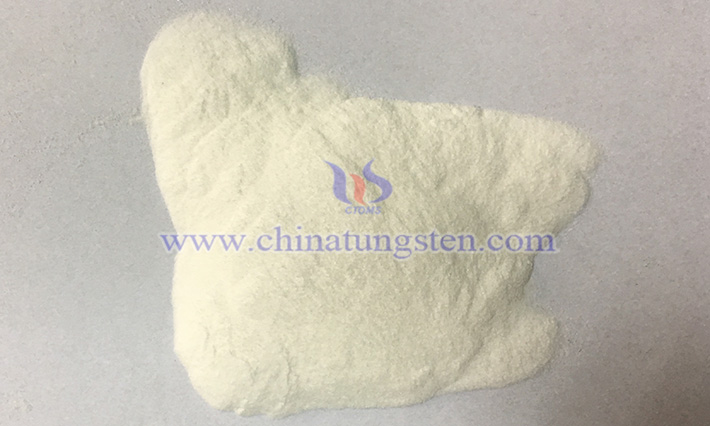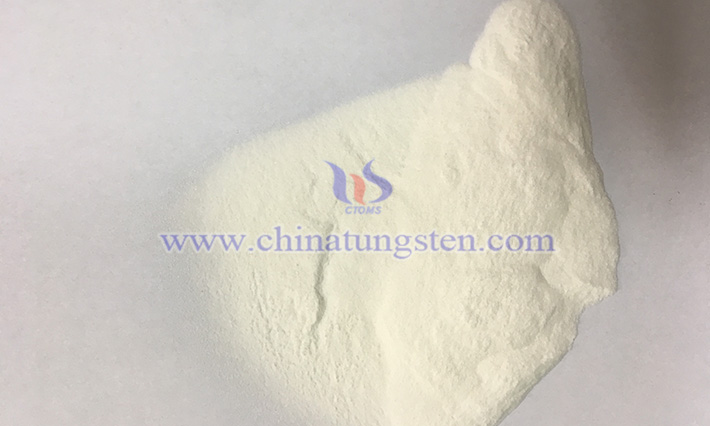Production of Ammonium Metatungstate by Ion Exchange
- Details
- Category: Tungsten Information
- Published on Friday, 25 April 2025 16:44
As a vital tungsten chemical, ammonium metatungstate (AMT) can be produced using methods such as the neutralization method, sodium tungstate transformation method, and the ion exchange method. The ion exchange method stands out for its efficient separation and ability to produce high-purity products, making it a significant process for AMT production. This method leverages the selective adsorption and desorption properties of ion exchange resins to concentrate and transform tungsten.

Core Mechanism:
The ion exchange method relies on ion exchange resins—high-molecular compounds with exchangeable ion groups. In a tungsten-containing solution, tungstate ions (e.g., WO₄²⁻ or W₁₂O₄₀⁶⁻) exchange with ions on the resin (e.g., H⁺, Na⁺), becoming adsorbed. Once the resin reaches saturation, a desorbing agent (e.g., ammonia water) is used to release the tungstate ions into the eluate, forming an ammonium tungstate solution, which is then processed to produce AMT.
Process Steps of the Ion Exchange Method:
Raw Solution Pretreatment:
The tungsten-containing raw solution (typically from tungsten ore leachate or industrial waste liquid) undergoes pretreatment:
Filtration: Removes suspended particles and mechanical impurities to prevent clogging of resin pores.
pH Adjustment: Adjusts the solution pH to 3-7, as the form of tungstate ions varies with pH, optimizing resin adsorption efficiency.
Impurity Removal: Uses chemical precipitation or complexation to remove heavy metal ions, phosphate, and other impurities, minimizing interference in the exchange process.

Ion Exchange:
The pretreated solution is slowly passed through a column packed with ion exchange resin. Tungstate ions are adsorbed by the resin, while other ions flow out with the solution.
Key Controls: Resin bed height is typically 1-2 meters, flow rate is 5-10 BV/h (bed volumes per hour), and the effluent is periodically tested for tungstate concentration.
Resin Elution:
Saturated resin is eluted with 2-5 mol/L ammonia water at a flow rate of 1-3 BV/h. Ammonium ions bind to the tungstate ions on the resin, desorbing them and forming an ammonium tungstate solution in the eluate. Elution continues until the tungstate concentration in the eluate falls below 0.1 g/L, ensuring high tungsten recovery.
AMT Preparation:
Solution Adjustment: The eluate’s composition is analyzed, and an acid (e.g., nitric acid) is used to adjust the pH to 2-4, promoting the polymerization of tungstate ions into AMT.
Evaporation and Concentration: The solution is concentrated at 80-100°C under a vacuum of -0.08 to -0.06 MPa to increase AMT concentration.
Cooling Crystallization: Gradient cooling is applied—rapid cooling to 40-50°C, then slow cooling to room temperature—to obtain uniform crystals.
Filtration and Washing: Crystals are separated from the mother liquor using a centrifuge or filter press and washed with deionized water to remove impurities.
Drying: Crystals are dried in a vacuum drying oven or hot air dryer at 80-120°C for several hours to produce the final AMT product.
Resin Regeneration:
After elution, the resin is regenerated for reuse:
Rinse with deionized water to remove residual eluate and impurities.
Regenerate with 1-3 mol/L hydrochloric acid or 1-2 mol/L sodium chloride solution to restore the resin’s exchangeable ions.
Rinse again with deionized water until neutral, preparing the resin for the next cycle.
Advantages of the Ion Exchange Method:
Effectively removes impurities, producing AMT that meets high-end application requirements.
Can handle tungsten-containing solutions of varying concentrations and compositions, offering broad applicability.
Resin is reusable, generates minimal waste, and the process is relatively clean.
Disadvantages:
High initial investment in ion exchange resins and equipment.
Limited adsorption capacity requires periodic regeneration, increasing operational complexity.
High-concentration solutions can quickly saturate the resin, reducing production efficiency.
- Chinatungsten Online: ammonium-metatungstate.com
- CTIA GROUP LTD: en.ctia.group
- Tungsten News & Price: www.ctia.com.cn
- Molybdenum News & Price: news.molybdenum.com.cn
- Tel.: 86 592 5129696; Email: sales@chinatungsten.com



 sales@chinatungsten.com
sales@chinatungsten.com